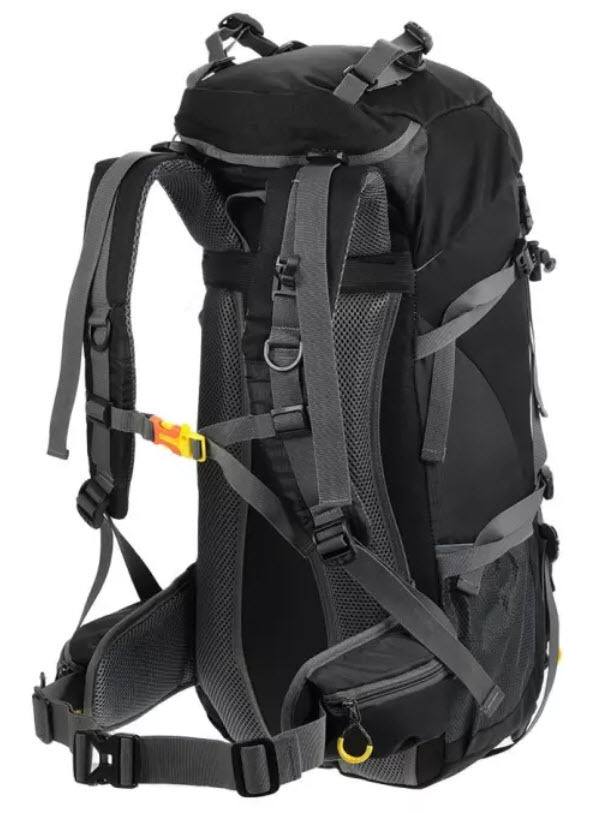Your backpack is the most important piece of equipment if you are a weekend adventurer, and more so, if you are an avid hiker. Ideally, a backpack which you would carry all day long should be lightweight and durable. Additionally, it should have easy-to-reach compartments and pockets. Most importantly, the backpack should fit you well.

If your backpack fits well, you would have no trouble lifting heavy loads for long distances, but a bag that ill-fitting will feel like a pile of stones even if it has not been loaded that heavily. When they buy their first backpack, a lot of people don’t care much about how the straps fit. More often than not, a majority of them never bother adjusting the straps and keep on using the same “factory settings” as if they are the only choice. Most store staff do not bother telling their customers how to adjust a backpack.
Thus, a lot of young hikers do not bother adjusting their backpack straps and keep on carrying it the way it always has been (except tightening the shoulder straps now and then) until the bag is worn out, or they buy a new one; and the same cycle continues. Most people do not realize it, but when you are carrying a bag on your back, it becomes a part of your body for that period and should be treated so. This can lead to being a pleasant experience, or a horrible one, depending on how well your backpack fits.
Table of Contents
How to Adjust Backpack Straps
The tips in this article about how to adjust a backpack are mostly for adventure/ hiking category bags. Any other bags you might be using (for a daily commute or school) might not have all the features that these backpacks have. So, to all the would-be hikers, choosing a backpack for your hike is extremely important.
Before we read about how to adjust backpack straps, we must take a look at how to choose your backpack correctly.
Choosing Your Backpack
Like garments, backpacks are also available in small, medium, large and extra large sizes, and come equipped with different suspension systems to support a variety of torso lengths. Before considering buying a backpack, you should first determine if your torso can handle its length, and so, you need to measure your torso. This is fairly easy; you would require a friend’s help for this and a tape measure.

Tilt your head and locate the bump where the shoulders meet the neck (C7). This is where your starting point is, and the length should run all the way down to the top of your hip bones (iliac crest). This region constitutes your torso length.
Similarly, you should also note down the torso length of the backpack. This information can be found at the backpack manufacturer’s website or written down on the tag. Below is a rough chart to measure the length (sizes may vary from manufacturer to manufacturer).
Before buying a backpack, trying it out first is always a good idea. Some stores will provide you with sandbags so you can put them in the backpack and get an idea of how they would feel on your back while on a hike. Hence, brick-and-mortar stores have this advantage over online stores. To learn more, see our article about measuring torso length to find the right fit for your backpack.
Alternatively, if you have already bought a backpack off the shelves or ordered one online, you can go about this fitting procedure by filling the bag with small sacks or tinned food to get an idea of how it will fit on your back. Allow the backpack to hang on your back freely before you move on to adjusting the straps.
Once your backpack feels right on your torso, you can make use of the provided straps to adjust it on your body.
The Suspension System
The suspension system is extremely important if you want the backpack to have a good fit. This should come right after you have measured your torso length. The following steps will tell you how to adjust the suspension system.

Source: lixada.com
- 1Suspension systems vary from backpack to backpack, but all of them serve the same purpose. To adjust the system, you will first need to unlock it, and then remove it where it is attached to the shoulder straps.
- 2Add about 1.5 inches to your torso length, and match it to the backpack’s bottom panel. Mark the backpack here with a pen.
- 3Right below this mark, adjust and tighten the suspension system, and you should be good to go. Wear it once and see if it sits right and the shoulder straps are snug.
Once the suspension system is adjusted properly along with your spine, you should feel that the hip belt is centered over your hip bones. A lot of blogs out there claim that the hip belt should be sitting a couple of inches above your hip bones, but it is a preference and differs from person to person. Some people do not feel comfortable if the belt is sitting right on their hip bones, while others feel right at home with it.
The Hip Belt
For doing this, we are assuming that the backpack is full of stuff (just as you would carry it). Also, in the last step, we adjusted the suspension system so that the hip belt is centered on your hip bone. If you find the hip belt inching towards your crotch or is centered around your stomach, you should take the backpack down and adjust the shoulder straps so that it is sitting where it should be.

Source: amazon.com
If you think the hip belt is in the correct position, tighten it, but not too much. It shouldn’t be too loose either or the weight will gradually move downwards and you will be uncomfortable. Make sure that your shoulders are not taking too much weight, because the purpose of the hip belt is to distribute the weight equally from your shoulders to your hips.
The purpose of this exercise is to make sure that the hip belt is secured properly.
The Shoulder Straps
The hip belt should be taking most of your weight before you do this. Start tightening the shoulder straps until you feel that they are firm around your shoulders, but not very tight. If they are pinching in your armpits, you should adjust them until they are not.

The correct length for shoulder straps is that they should be resting about 2 inches below the top of your shoulders. There should not be too much space between the shoulders and the shoulder straps. Too high means that you will need to correct the suspension system until it sits just right.
Another way to check this is by inserting a finger between the shoulders and the shoulder strap.
The Load Straps
The load lifter or load straps are the two thin strips right on your shoulder straps. Pull on these gently to pull the backpack to your lower back. Make sure it is not too tight or too loose, because it may interfere with the weight distribution, and you might experience a slight sway as you walk.

Source: rei.com
If you pull them down too tight, the shoulder straps will start digging into your armpits, so avoid that. Please note that the load straps may be different on any number of backpacks, but don’t pull them so tight to wrinkle the shoulder straps. The preferred angle for this is approximately 45° from the top of your shoulders. This is one step closer to your learning how to adjust a backpack.
The Sternum Strap
The purpose of these straps is to keep your shoulder straps in place and to lessen the burden on your shoulders and allowing your arms to move freely. They are also there to make sure that the straps do not slip off your shoulders as you move.

Make sure that the shoulder straps remain comfortably below your armpits. Do not tighten them so much that you feel suffocated or put too much strain on your chest.
Final Adjustments
When everything feels alright, load up your backpack and secure all your straps. You might want to make minor adjustments every few miles as you move along the trail. The most important factor is to be comfortable as you keep on moving. If you were wearing a jacket when you made your adjustments and take off after a few miles of walking, you might feel the need to readjust the straps.
While you have made the straps comfortable around you, you should also make sure beforehand that your backpack is packed accordingly and is well organized for a hiking trip.

Conclusion
So this concludes our article about how to adjust a backpack. A few things to remember while you are walking with a backpack on is to lean a little forward in order to help you maintain balance, but not too much so that you put a strain on your neck and your back. Also, with every break you take, do not forget to take the backpack off to help relax your muscles. We do hope this article helped you teach how to adjust a backpack for all your future adventures!
Resources:
Hindawi
Montana State University
NCBI
